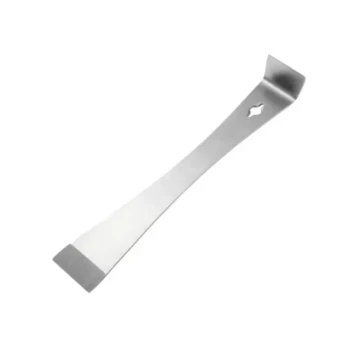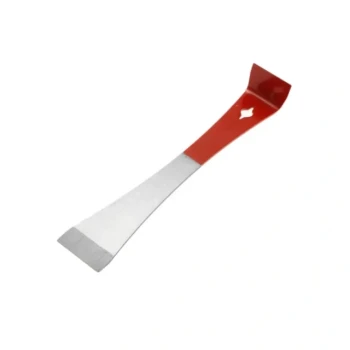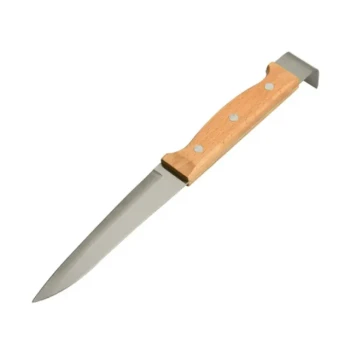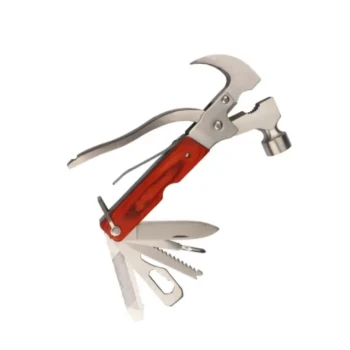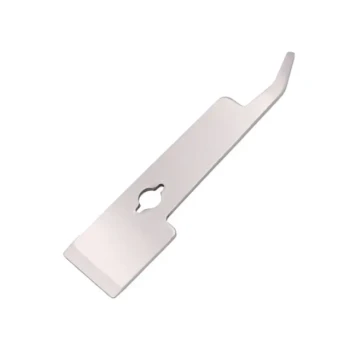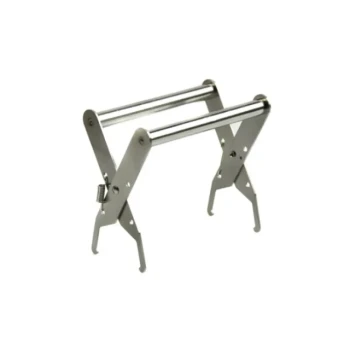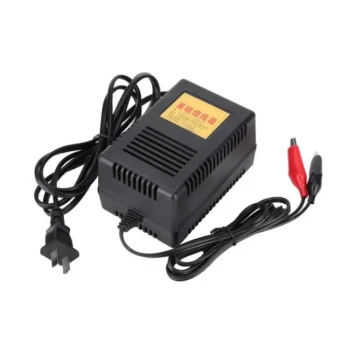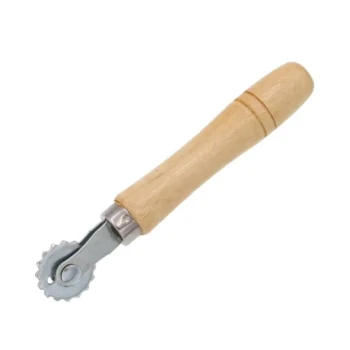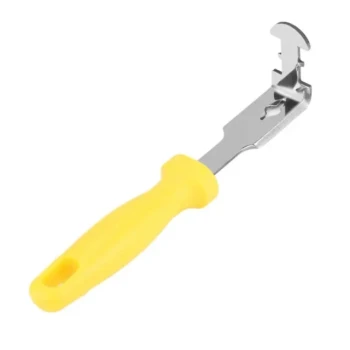Safe hive tool handling is a fundamental discipline in beekeeping. It requires a dual focus: protecting yourself from the tool's sharp edges and using it in a way that minimizes disturbance to the hive. This involves wearing appropriate protective gear, being mindful of hand placement to avoid cuts, and employing gentle, deliberate movements to keep the colony calm.
The core principle of hive tool safety is not just about avoiding injury. It's about mastering the tool to become an extension of your calm intent, ensuring both your own well-being and the tranquility of your bees during every hive inspection.
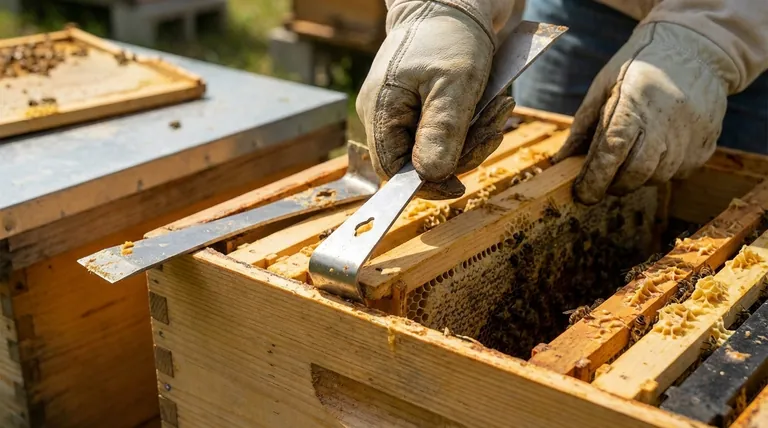
The Dual Imperatives of Hive Tool Safety
Effective use of a hive tool is a balancing act. You must consider the physical risk the tool poses to you and the behavioral risk your use of the tool poses to the colony.
Protecting Yourself from the Tool
A hive tool is a sturdy piece of metal, often with sharpened edges designed for prying and scraping.
Your primary physical risk is laceration. When scraping propolis or wax from frames or hive bodies, always ensure your other hand is out of the tool's potential slip path.
Excessive or sudden force is a common cause of injury. A tool caked in sticky propolis may require more pressure, increasing the chance it will slip unexpectedly.
Protecting the Colony from Disturbance
Your actions with the tool directly influence the hive's temperament.
Sudden, jarring motions are interpreted by the bees as a threat from a predator. This will trigger a defensive response.
Use gentle and deliberate movements. The goal is to pry components apart with slow, steady leverage rather than quick, aggressive jerks. Calm and confident handling reduces stress on the colony.
Mastering Core Hive Tool Functions
Each function of the hive tool has a corresponding safe technique. Understanding its design is key to using it correctly.
Prying and Separating Hive Bodies
The standard tool has a flat, chisel-like blade for this purpose.
Insert the blade into the seam between boxes and apply steady, gentle pressure. Work your way around the box to loosen the propolis seal evenly.
Lifting and Handling Frames
The curved, hook-like end is designed to lift frames.
Use the hook to pry the end of a frame up just enough to get a grip with your fingers. This provides control and reduces the risk of dropping a frame, which can injure bees and agitate the colony.
Scraping Wax and Propolis
This is often where beekeepers cut themselves.
Brace the component you are cleaning on a stable surface. Scrape with smooth strokes, directing the tool away from your body and ensuring your supporting hand is safely out of the way.
Understanding the Trade-offs and Risks
While essential, the hive tool is not without its hazards. Awareness is the first step toward mitigation.
The Hazard of Sharpened Tools
Some beekeepers sharpen their tools to cut through tough brace comb or even stray vines.
Be aware that a sharpened edge significantly increases the risk of personal injury during routine tasks. A standard, unsharpened edge is sufficient and safer for most beekeeping work.
The Danger of a Poorly Maintained Tool
A neglected tool is an unsafe tool.
Propolis, wax, and honey residue can make a tool sticky and difficult to handle. This necessitates more force, which can lead to slips and errors.
Clean your tool after every use by scraping it and washing it with warm, soapy water. Rubbing alcohol can help remove stubborn propolis stains.
The Broader Context of Hive Safety
Your hive tool is just one element of a comprehensive safety approach.
Always wear protective gear, including a bee suit, veil, and gloves. Observe the bees' behavior before and during an inspection to gauge their defensiveness.
Mindful tool use is what prevents the bees from becoming defensive, but your gear is the crucial backup that protects you if they do.
Making the Right Choice for Your Goal
Integrating these principles will make safe tool handling second nature.
- If your primary focus is personal safety: Always be conscious of where your non-dominant hand is in relation to the tool's path, especially when scraping.
- If your primary focus is hive tranquility: Use slow, deliberate prying motions and avoid any sudden, jarring movements that could be perceived as a threat.
- If your primary focus is overall efficiency: Keep your tool clean and in good condition; a functional tool requires less force and reduces the risk of slips and errors.
Mastering your hive tool transforms it from a simple lever into an instrument of calm, confident, and safe beekeeping.
Summary Table:
| Safety Focus | Key Precaution | Why It Matters |
|---|---|---|
| Personal Safety | Scrape away from your body; keep hands clear of the blade's path. | Prevents lacerations from slips or sudden movements. |
| Hive Tranquility | Use gentle, deliberate prying motions; avoid sudden, jarring actions. | Reduces stress on the colony, preventing defensive responses. |
| Tool Maintenance | Clean tool after each use; avoid unnecessary sharpening. | A clean, functional tool requires less force, reducing slip risk. |
Equip Your Operation with Professional-Grade Safety
Mastering your hive tool is fundamental to safe and productive beekeeping. For commercial apiaries and distributors, having reliable, high-quality equipment is non-negotiable. HONESTBEE supplies durable beekeeping supplies and equipment designed for the demands of wholesale and commercial operations.
Let us help you enhance safety and efficiency. Contact our team today to discuss your equipment needs and discover how our products support calm, confident, and safe hive management.
Visual Guide
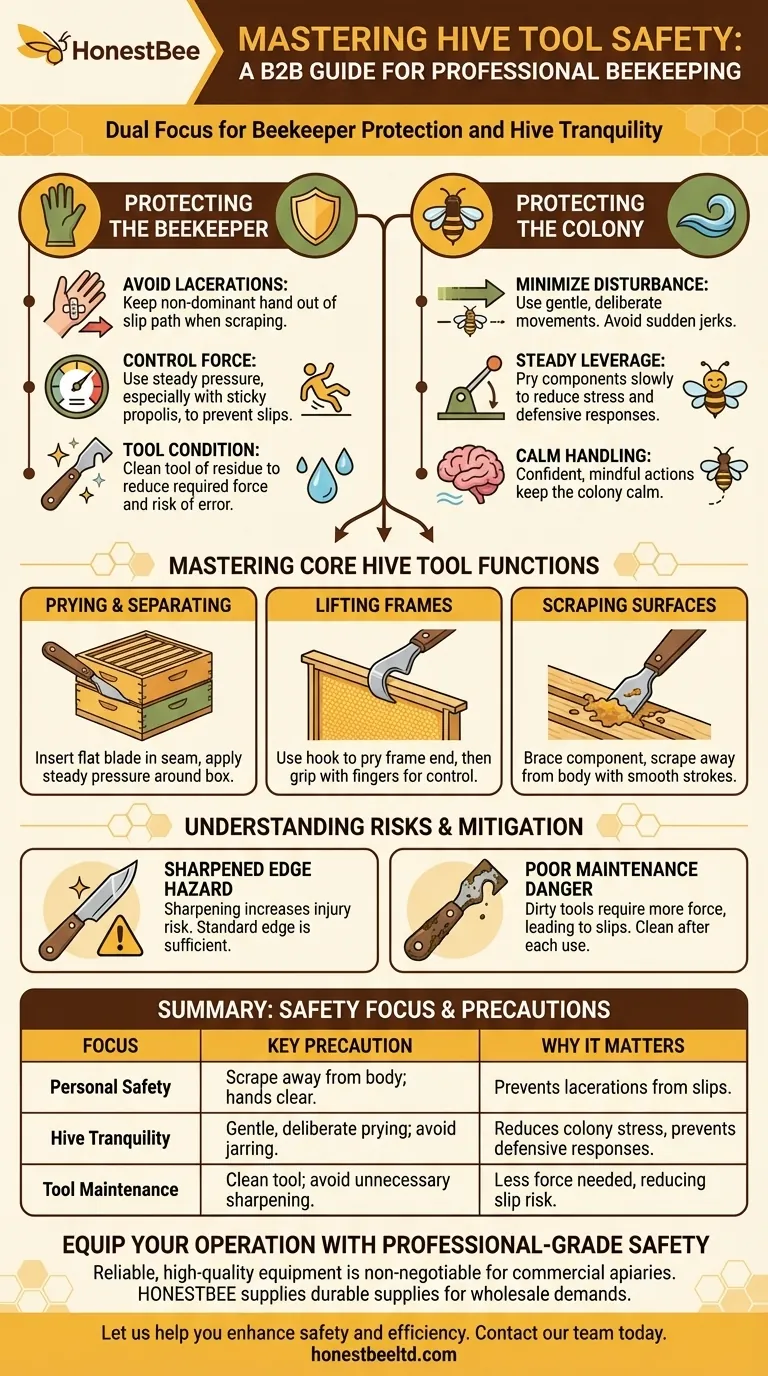
Related Products
- Professional Stainless Steel Pry-Bar Hive Tool
- HONESTBEE Advanced Ergonomic Stainless Steel Hive Tool for Beekeeping
- HONESTBEE Professional Long Handled Hive Tool with Precision Cutting Blade
- HONESTBEE Premium Italian Style Hive Tool with Hardwood Handle
- Professional Steel Pry-Bar Hive Tool with Painted Grip
People Also Ask
- What equipment and implements are needed by beekeepers besides the hives? Build Your Essential Beekeeping Toolkit
- What additional safety equipment should beekeepers use? Essential Tools for Hive Management
- What types of hive tools are available for beekeepers? Choose the Right Lever for Your Apiary
- What is the correct method for lifting frames with a hive tool? Master the Technique for a Calm Hive
- What are the features of a regular hive tool? The Essential Multi-Tool for Every Beekeeper
